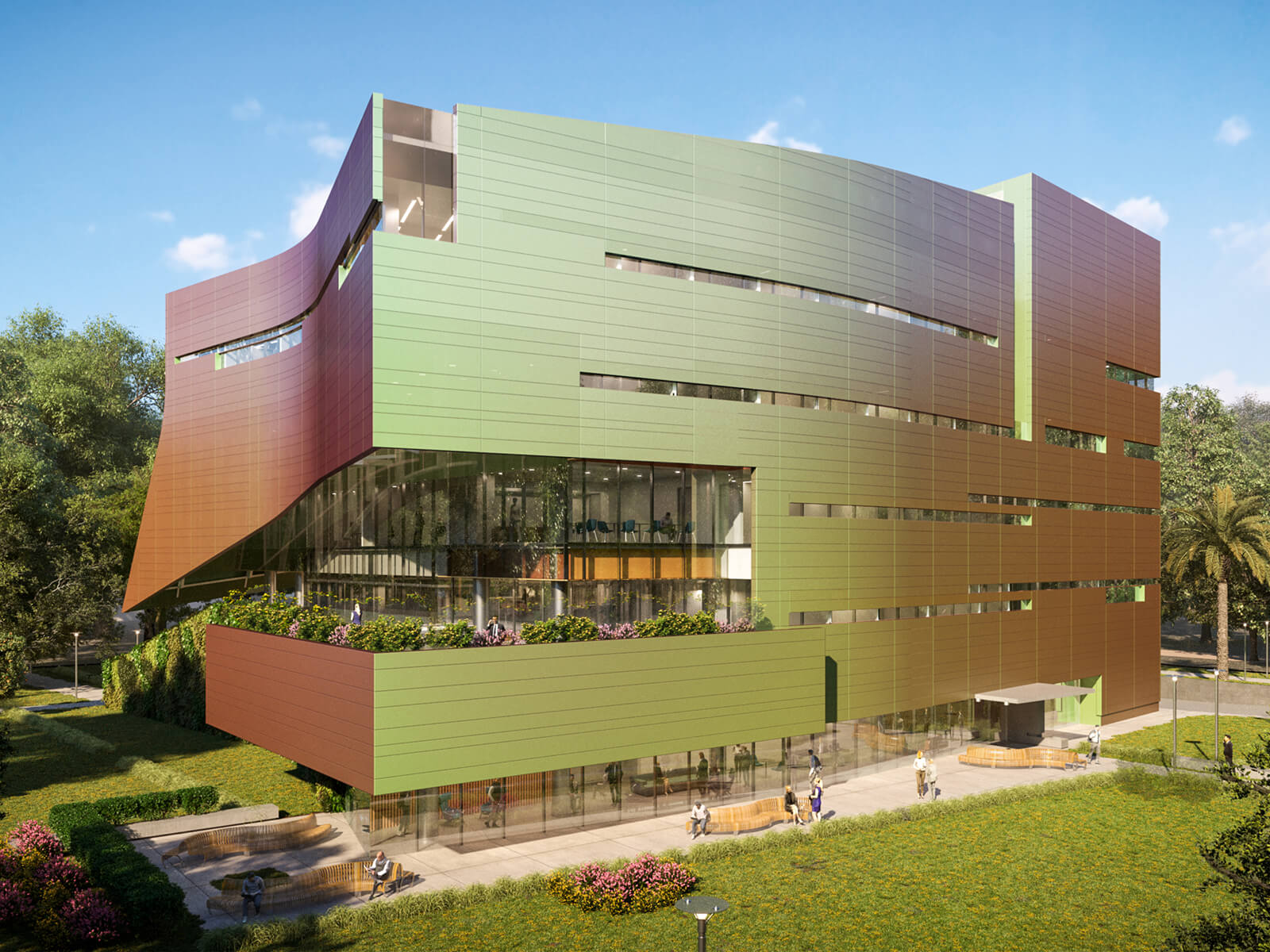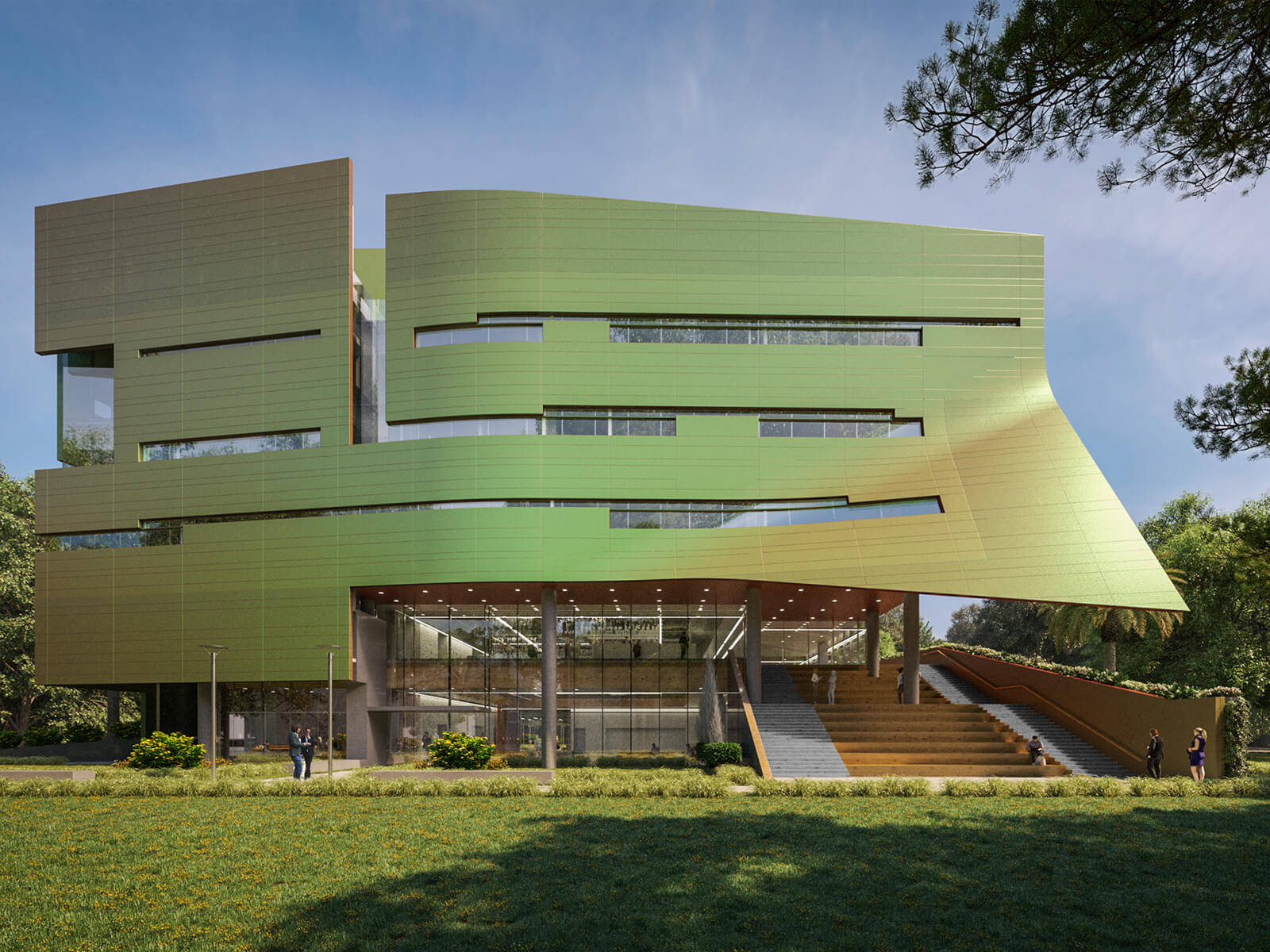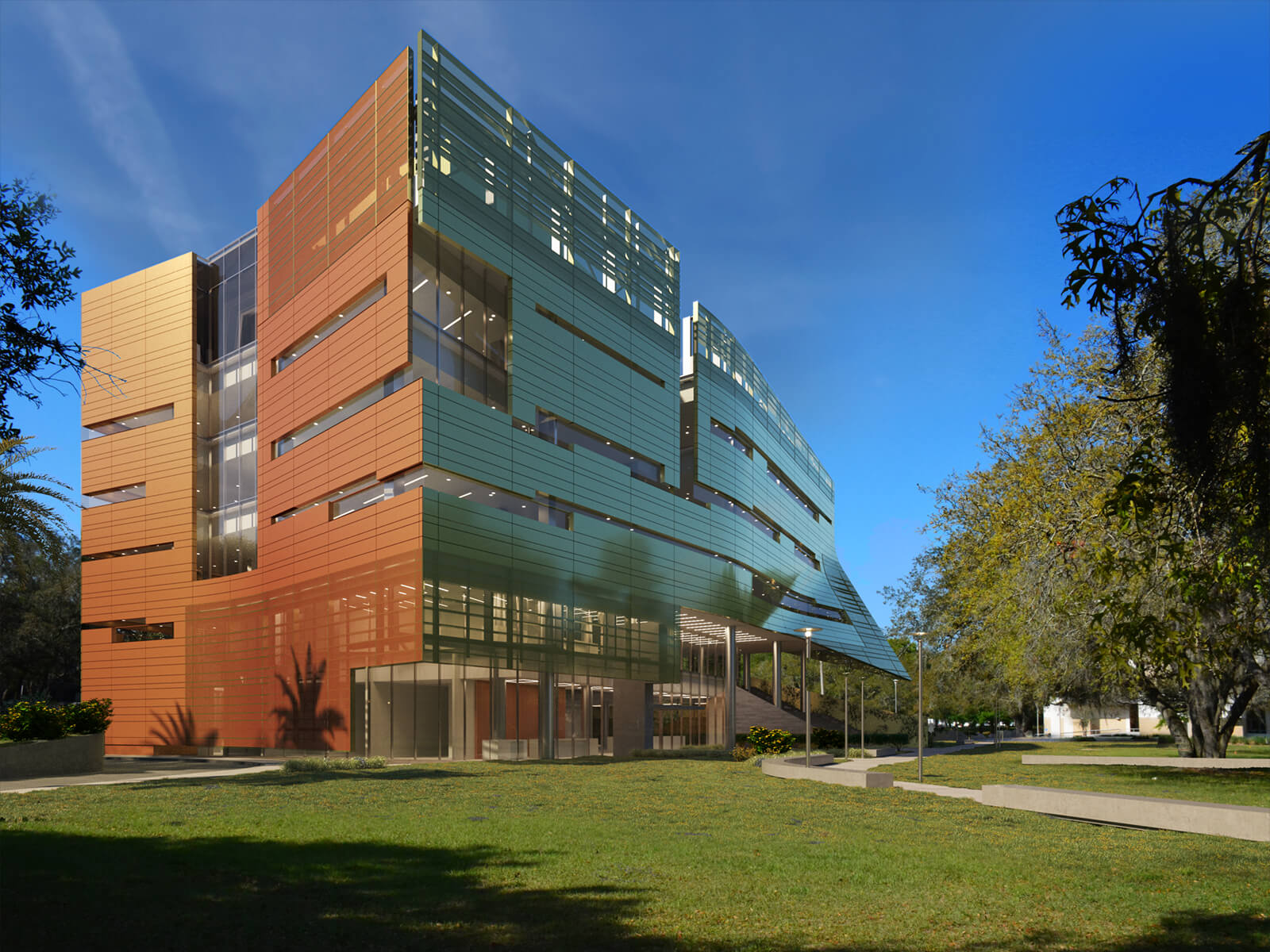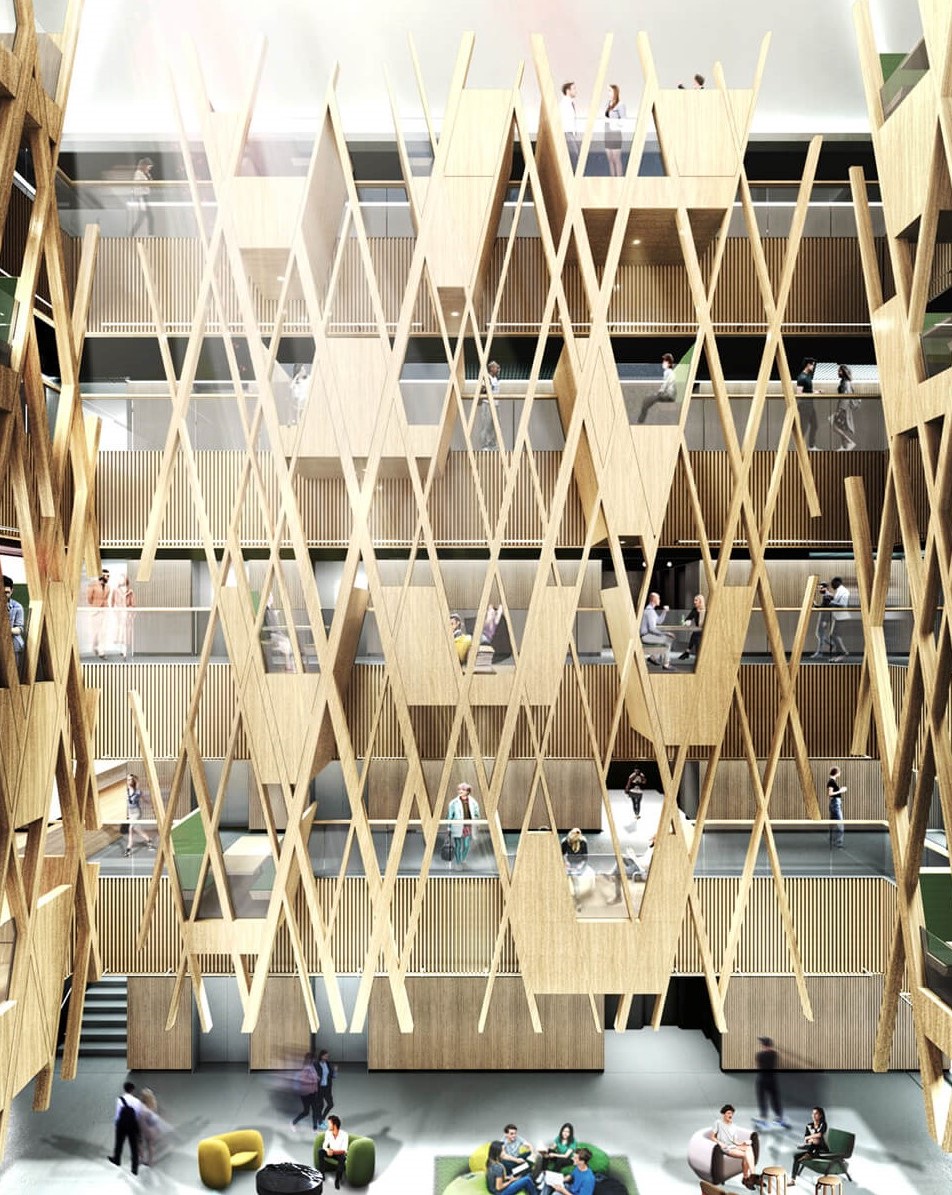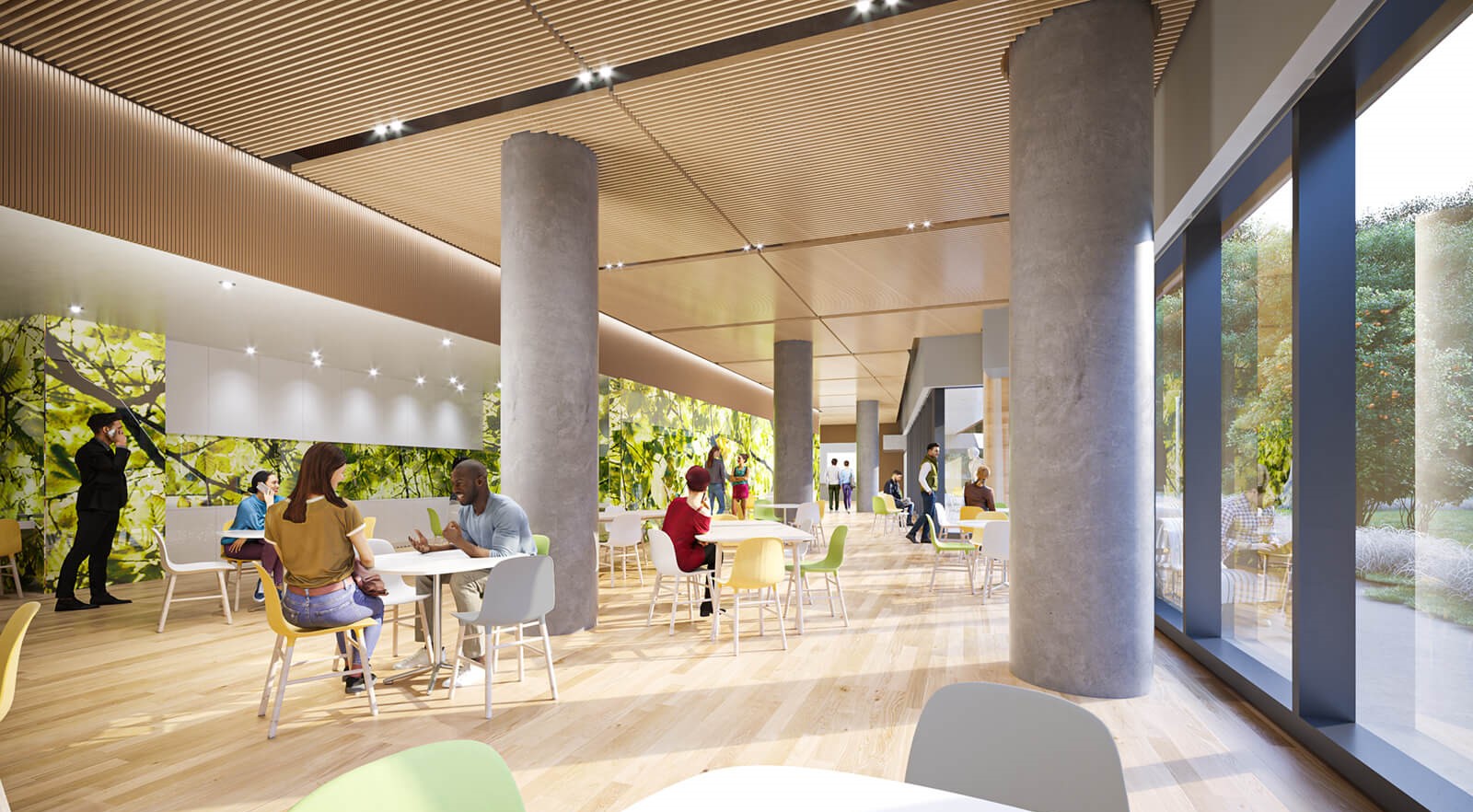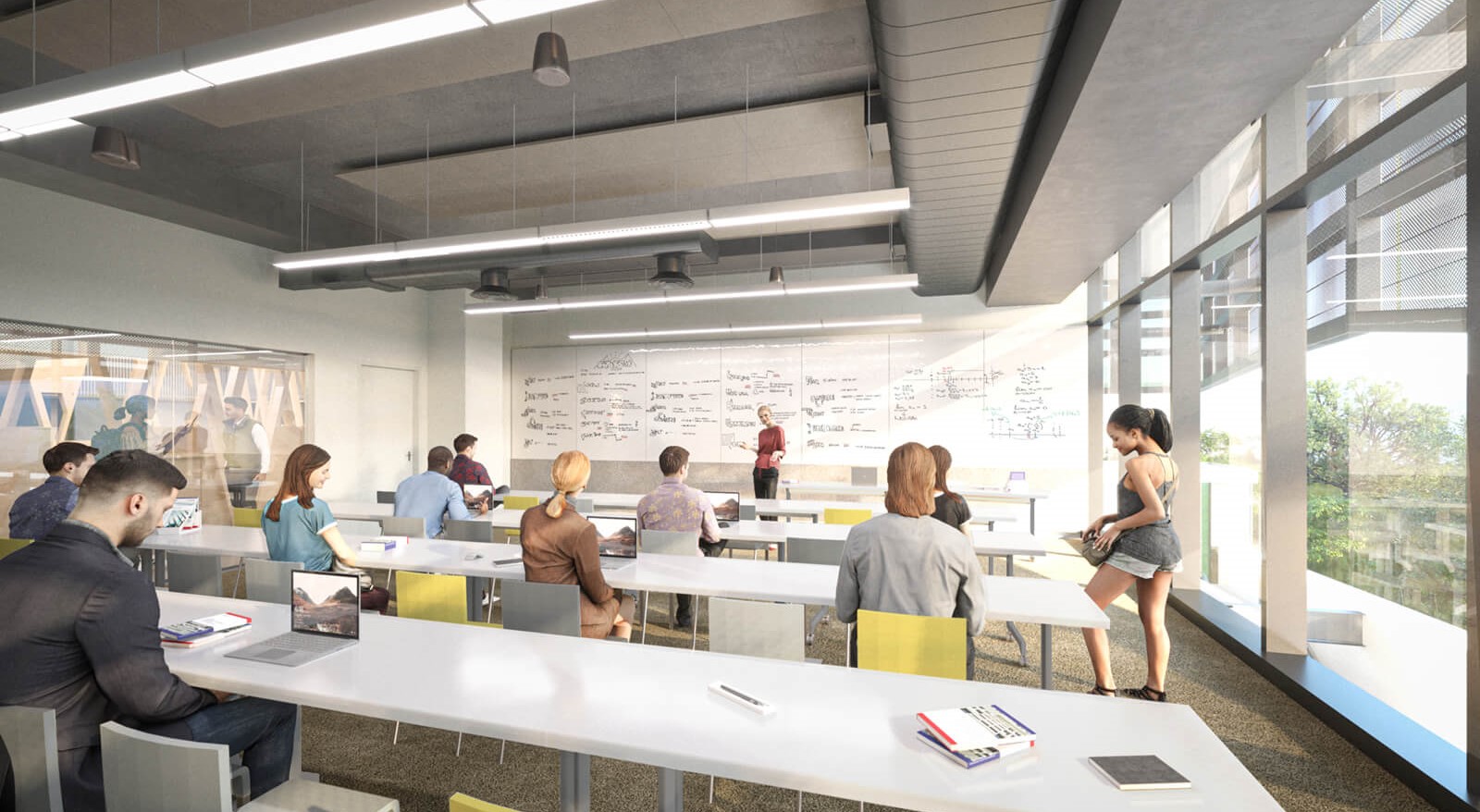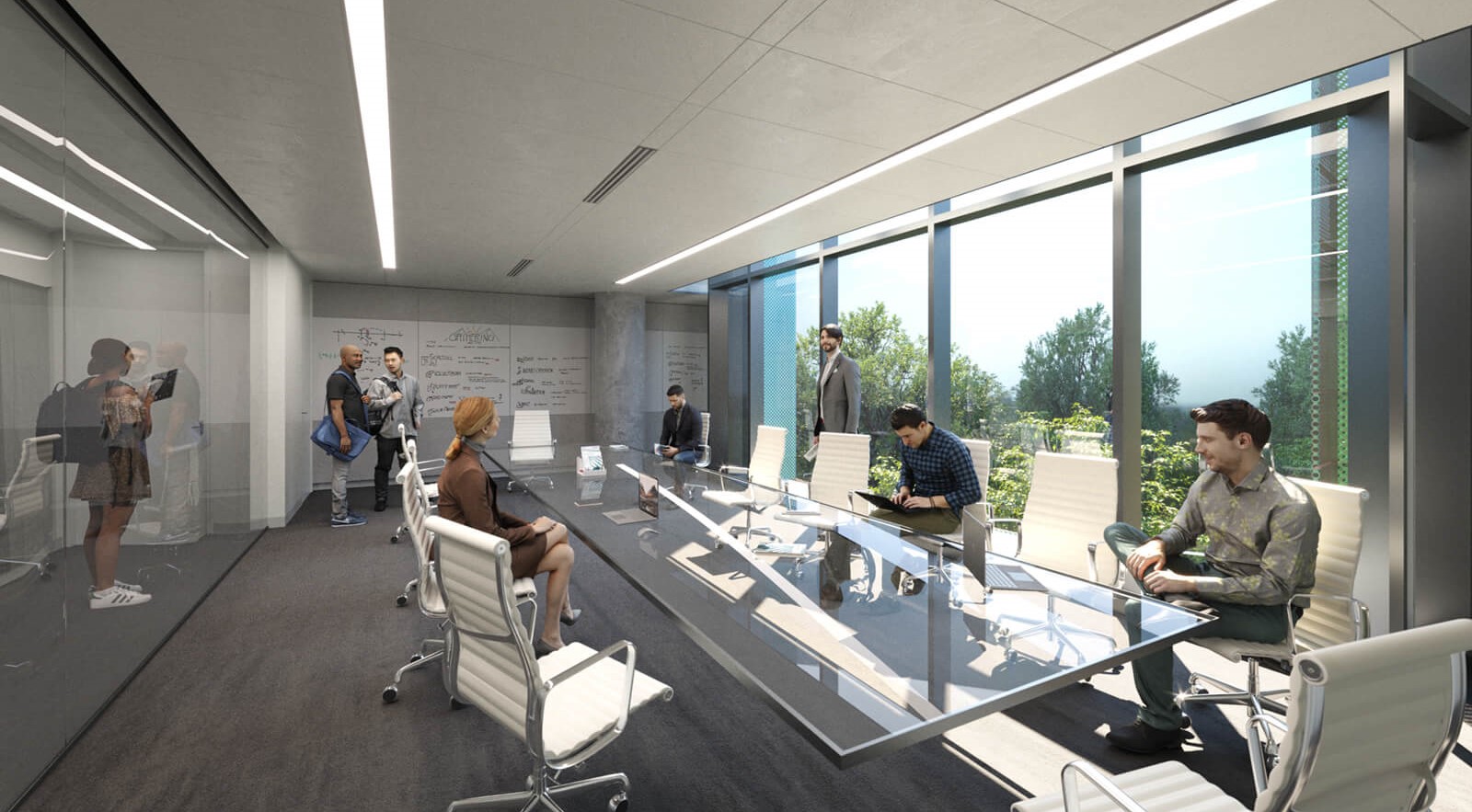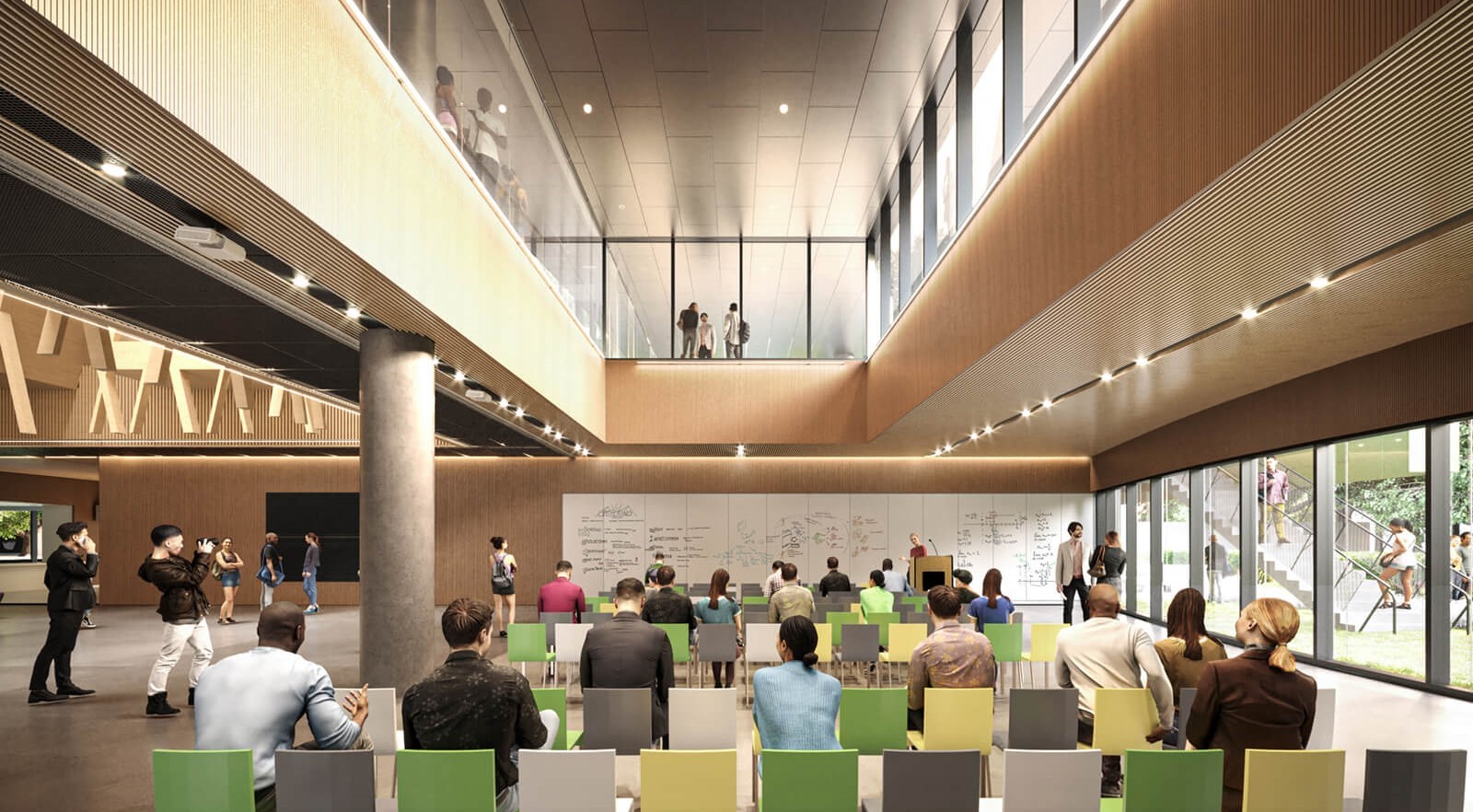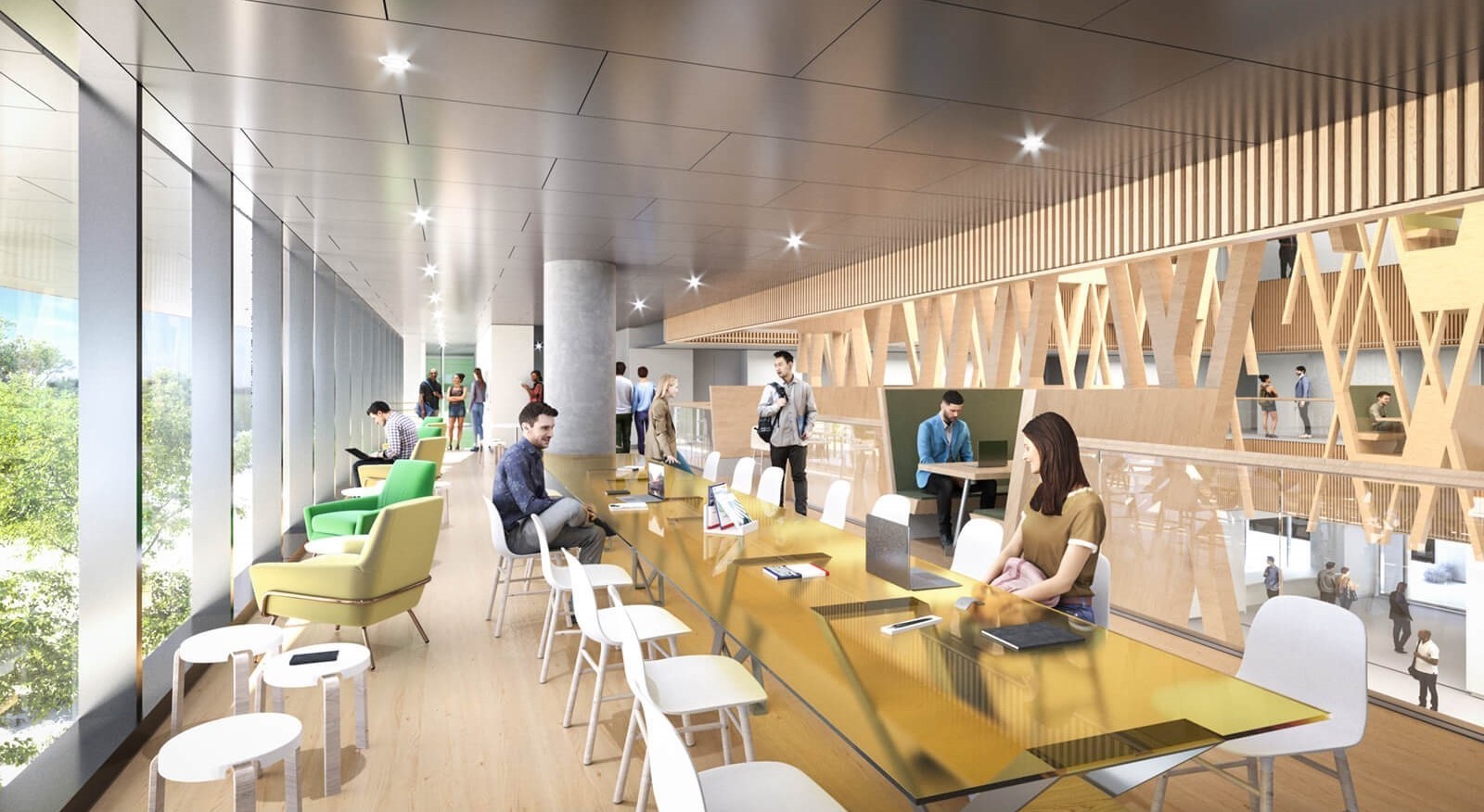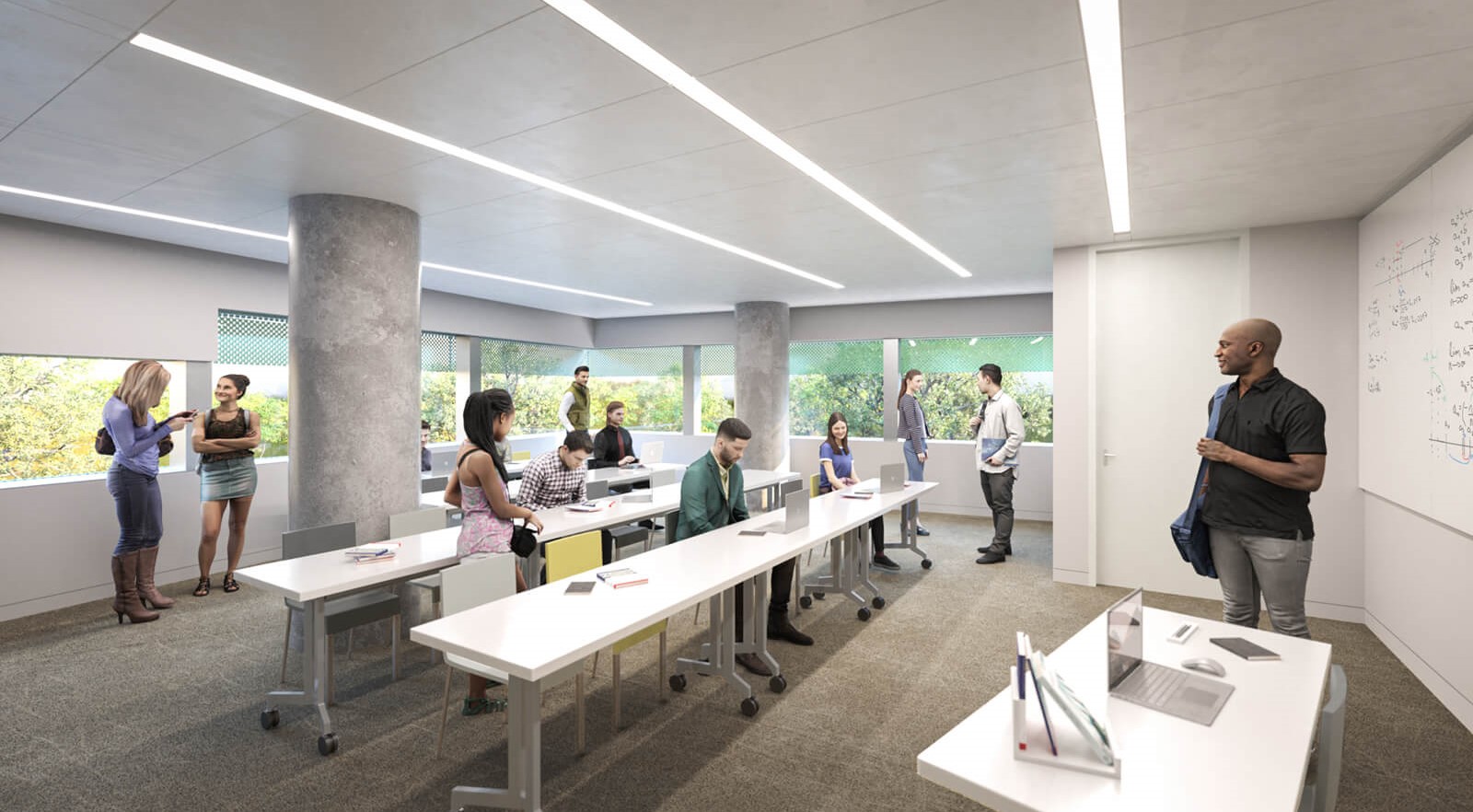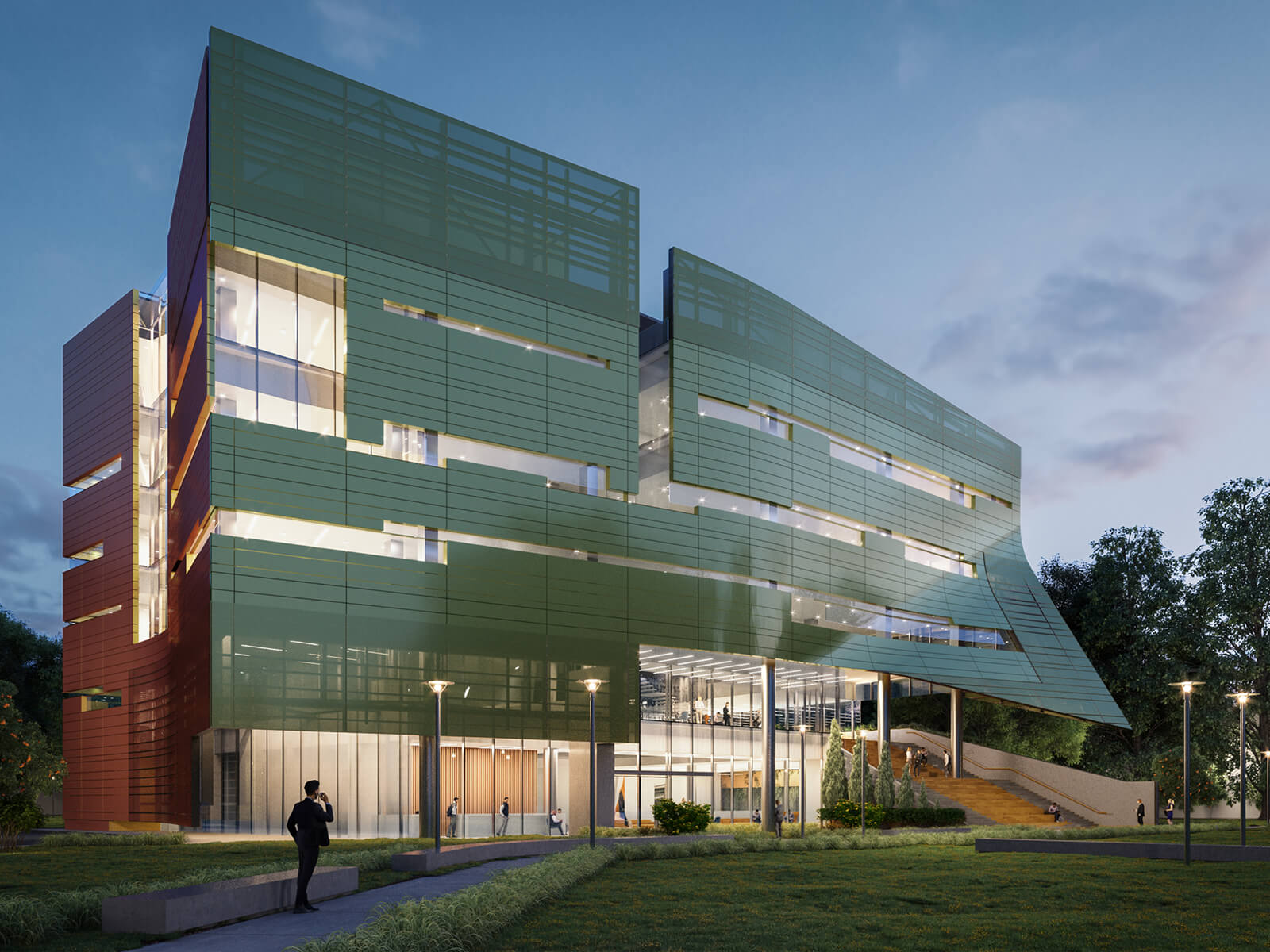FleischmanGarcia acted as the Prime Architect in collaboration with Morphosis, the Design Architect on this new Honors College facility. The 86,000 SF 6-story facility strives to provide the general USF community, students, advisors, faculty, administrators and visitors an inspiring new home, fostering interdisciplinary creativity and conversation in multiple academic fields, including the Arts, Sciences and Humanities. The Honors College program is geared to merging students and faculty from various disciplines and serves as a vessel for discovery and discussion through collaborative and interdisciplinary engagements. A lower building encourages walking and greater pedestrian activity which, in turn, increases the frequency of casual encounters and informal meetings critical for interdisciplinary discussions and work collaboration.
The design includes an enclosed but transparent ground floor with a space large enough for communal gatherings, event spaces, and other large, programmed events. A more opaque mass sits above the ground floor, containing various program elements. Additional communal spaces are provided on the 2nd floor, with more Honors College centric programs being located on the upper floors. A centrally located atrium connects all users into a single spatial experience. The atrium is lined with meetings spaces, immediately making visible various forms of collaboration. Both the first and second floors anchor important meeting spaces, as well as open work spaces. The ground floor event space is highly visible from Sessums Mall as students approach the building from the Central Campus. Enclosed with full height glass for maximum views, the interior café space extends to an adjacent, outdoor space. Additional outdoor seating is located on the second floor with an exterior covered terrace. The new Honors College strives to achieve LEED silver. Similar to the building’s academic mission, the design of the building strives to merge site planning, building planning, engineering, sustainability, and architecture into an integrated, cohesive and expressive facility. The environmental goals manifest themselves into the building form and expresses its sustainable features.

